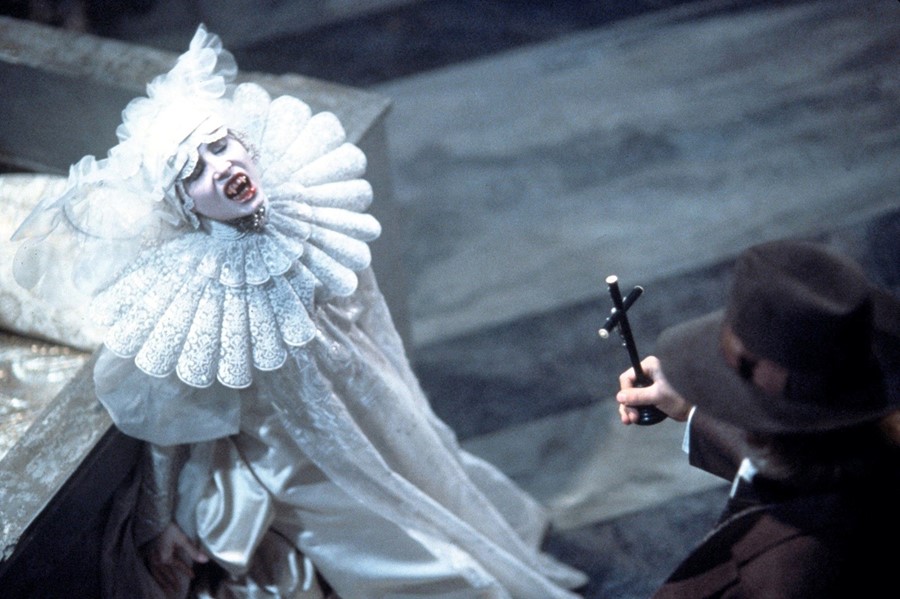A retrospective look at the high priestess of darkly opulent costume design
Taken from the November issue of Dazed & Confused:
Before Eiko Ishioka brought her strange, gothic splendour to Francis Ford Coppola’s erotically charged Bram Stoker’s Dracula (1992), the Count’s stiffly caped onscreen image had been as frozen in time as the vampire himself. But in the hands of the visionary costume designer and art director, he became a surreal and sensual creature in exotic, unsettling guises, winning her an Oscar for her efforts. This year, Ishioka, who died in January 2012, received a posthumous nomination for her eerie fairytale work on long-time collaborator Tarsem Singh’s Mirror Mirror.
It was always about the opulence and always so elegant and refined, like the vampire bride in Dracula with that incredible lace ruff framing her face
“Eiko is the high court of horror,” notes Deborah Nadoolman Landis, historian and founding director of The David C Copley Center for Costume Design at UCLA. “It was always about the opulence and always so elegant and refined, like the vampire bride in Dracula with that incredible lace ruff framing her face. It really was a head on a platter.” To Landis, whose extensive work as a costume designer includes Michael Jackson’s “Thriller” and Raiders of the Lost Ark, Ishioka belonged to an operatic school of thought. “She was using costume design to advance the narrative by making her clothes part of the set. Really it was as much set design as costume design. It was unmistakably look-at-me, the centre of the frame.”
With Singh, Ishioka created bizarre, striking fantasy worlds, and her dangerous eroticism made his 2000 debut The Cell soar to exquisite visual heights. She created a beautifully menacing dreamscape to represent Jennifer Lopez being trapped in the perverted mind of serial killer Carl Stargher. “She essentially becomes a sex toy, so she had to look erotic and uncomfortable at the same time,” Ishioka told the Ottawa Citizen in 2000. “I gave her a sheer dress, a big black-and-red wig and a bizarre hard collar made of plastic. Jennifer asked me if I could make the collar more comfortable, and I said, ‘No — you’re supposed to be tortured.’ ”
In a career that not only spanned stage and film but also included pioneering advertising work for Japanese department store Parco and collaborations with Grace Jones and Björk, Ishioka made darkness an enchanting thing, mysteriously illuminated by her poetic eastern vocabulary, carnal red silhouettes and riffs on insects, reptiles and dragons. “Eiko leaves behind a huge legacy,” Landis says. “Her work and drawings are artefacts and art that stand on their own. She gives designers and directors permission to extend their imagination. She took theatrical language and used it in the movies, and that happens very, very infrequently. In the future, I think designers will be able to point to that flayed muscle samurai suit in Dracula and say, ‘We can go this far.’”




